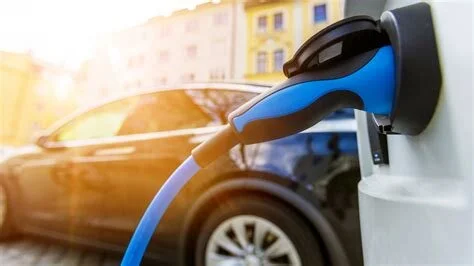Electric Rates for Electric Vehicles
Promote electric vehicles for electrification without rate subsidies?
Electric vehicle (EV) sales make up approximately 7.6%% of car sales as of 2023, with projections of market share of nearly 30% by 2030. As we are on the left hand side of the bell-curve of electric vehicle sales and technology, electric utilities and cooperatives are asking the question:
"Do we want our electric vehicle electric rates to spur adoption of electric vehicle technology and/or do we want to recover our full costs of serving EV customers?"
You can have both (say, spur adoption of electric vehicle through building infrastructure for electric vehicle charging, giving rebates on in-home fast charging units (Level 3 units (DC connection) vs. the slower charging Level 1 and 2 AC units)) while building these costs into the cost-of-service analysis for the particular electric utility or co-op. This would involve NO subsidies from other electric customers on your electric system.
So, let's take a very short tour of some of the rate structures and rebates that electric co-ops and utilities are using in 2021 to either attract customers to purchase electric vehicles, recover their costs to serve those customers, or both.
Charge your EV at night or always at off-peak hours
Pacific Gas & Electric offers two plans:
a. Combine your vehicle’s electricity cost with your residential electric use or
b. Install a separate meter for electric vehicle charging
Both rates are time-of-use plans, so the rate is based on the time of day. Rates are much less from 11 PM to 7 AM.
Here are some more details on this rate structure.
Utility Accounting and Rates Specialists provides on-line/on-demand courses on operations and construction project accounting, rates, and management for new and experienced co-op and utility professionals and Board Members. Click on the button to see courses that will enhance your career skills and provide value to your organization!
Charge your electric vehicle really late at night
San Diego Gas & Electric offers a super off-peak rate rate for EV charging that is 70% less than its on-peak rate. The off-peak period is midnight to 6 AM. Set your charger timer and go to bed, you’ll be set in the morning! Here are some details on that rate.
It is possible to encourage adoption of electric vehicles and recover the costs to serve the EV customer class. This article shows current approaches to rate design and rebates by electric co-ops and utilities.
Rebates for electric vehicle chargers
There are many EV charger rebate programs offered by electric co-ops and utilities. Here is a program from the Tanner Electric Cooperative, in North Bend, WA. The program offers a $250 rebate towards a Level 2 charger. An installed Level 2 charger can run as much as $1,000 installed, so the rebate defrays a substantial portion of the cost. Here are details on the rebate program.
Check your local electric provider for similar programs.
Grants for electric vehicle school busses and charging infrastructure
American Public Power Association reports that Anaheim Public Utilities is donating eight electric school buses and related charging units to the Anaheim Elementary School District. The busses and a portion of the chargers were funded through a grant from the California Energy Commission and rebates from the Anaheim Public Utilties.
The Anaheim program follows similar EV initiatives at utilities such as Seattle City Light, working with the Electric Power Research Institute (EPRI) and the Sacramento Municipal Utility District (SMUD).
The electric vehicle subscription model
Many of us are used to the subscription model. We buy our usage of apps, video (Netflix, Prime), and audio (XM) to meet our expected usage (or sometimes we forget to use the product and accidentally renew the subscription).
PG&E also offers a business plan that works on the subscription model. The consumer chooses their subscription level based on their maximum EV charging kW consumption. Overage fees apply at double the rate per kW. Here’s more detail on the electric vehicle subscription model rate structure.
This is just the taste of the smorgasbord of possibilities
The purpose of this article is to give you a flavor of various rates and programs that are evolving as the market for EV’s expands. What will be the dominate form of EV programs and rates? It’s too early to tell, but our next article in this series on electric rates will discuss the mechanics of calculating an EV subscription rate.
About Russ Hissom - Article Author
Russ Hissom, CPA is a principal of Utility Accounting & Rates Specialists a firm that provides power utilities rate, expert witness, and consulting services, and online/on-demand courses on accounting, rates, FERC/RUS construction accounting, financial analysis, and business process improvement services. Russ was a partner in a national accounting and consulting firm for 20 years. He works with electric investor-owned and public power utilities, electric cooperatives, broadband providers, and gas, water, and wastewater utilities. His goal is to share industry best practices to help your business perform effectively and efficiently and meet the challenges of the changing power and utilities industry.
Find out more about Utility Accounting & Rates Specialists here, or you can reach Russ at russ.hissom@utilityeducation.com.
The material in this article is for informational purposes only and should not be taken as legal or accounting advice provided by Utility Accounting & Rates Specialists. You should seek formal advice on this topic from your accounting or legal advisor.
